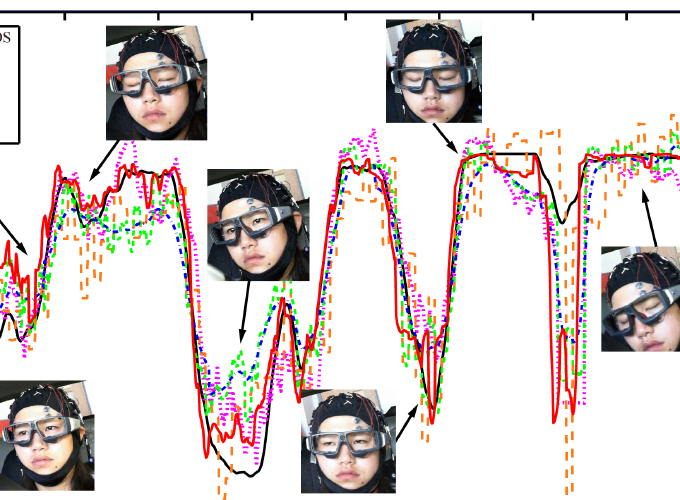A multimodal approach to estimating vigilance using EEG and forehead EOG
Abstract
Objective. Covert aspects of ongoing user mental states provide key context information for user-aware human computer interactions. In this paper, we focus on the problem of estimating the vigilance of users using EEG and EOG signals. Approach. The PERCLOS index as vigilance annotation is obtained from eye tracking glasses. To improve the feasibility and wearability of vigilance estimation devices for real-world applications, we adopt a novel electrode placement for forehead EOG and extract various eye movement features, which contain the principal information of traditional EOG. We explore the effects of EEG from different brain areas and combine EEG and forehead EOG to leverage their complementary characteristics for vigilance estimation. Considering that the vigilance of users is a dynamic changing process because the intrinsic mental states of users involve temporal evolution, we introduce continuous conditional neural field and continuous conditional random field models to capture dynamic temporal dependency. Main results. We propose a multimodal approach to estimating vigilance by combining EEG and forehead EOG and incorporating the temporal dependency of vigilance into model training. The experimental results demonstrate that modality fusion can improve the performance compared with a single modality, EOG and EEG contain complementary information for vigilance estimation, and the temporal dependency-based models can enhance the performance of vigilance estimation. From the experimental results, we observe that theta and alpha frequency activities are increased, while gamma frequency activities are decreased in drowsy states in contrast to awake states. Significance. The forehead setup allows for the simultaneous collection of EEG and EOG and achieves comparative
